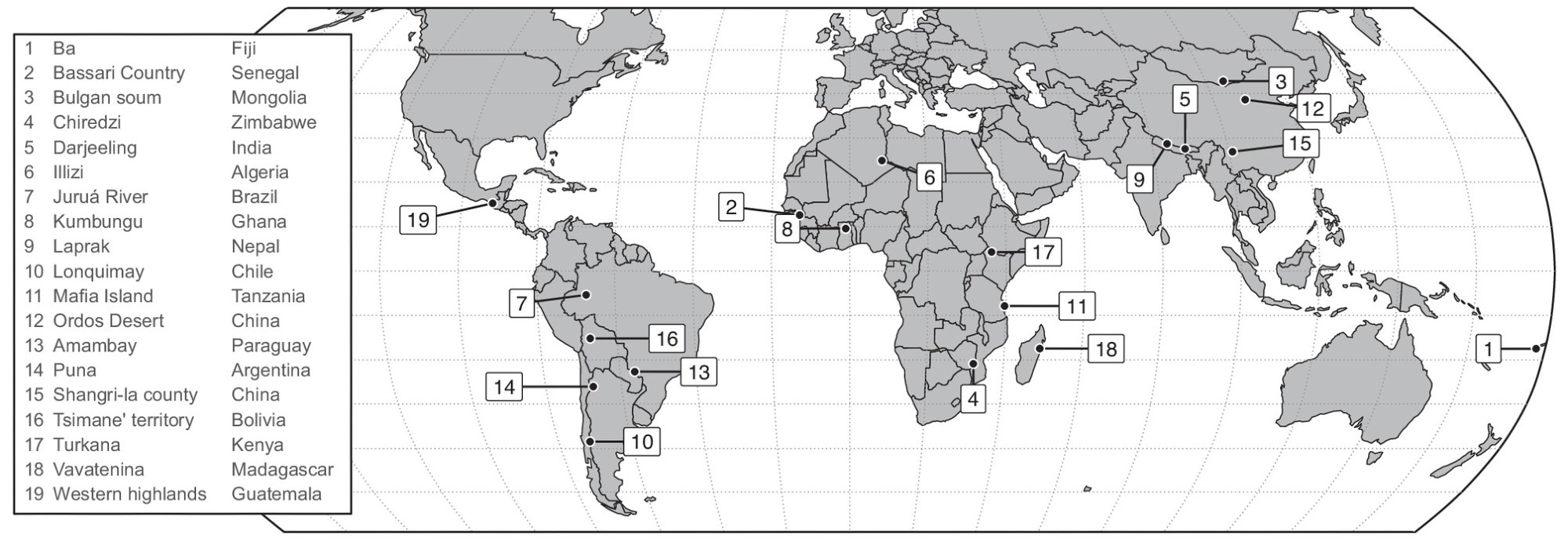In a recent study published in the Proceedings of the National Academy of Sciences, researchers explored the levels of life satisfaction in indigenous communities around the world. Their results illustrate that in non-industrialized societies, people can achieve high levels of life satisfaction even if their monetary incomes are low.
 Study: High life satisfaction reported among small-scale societies with low incomes. Local kids swinging on a rope swing,Fiji. Image Credit: Don Mammoser / Shutterstock
Study: High life satisfaction reported among small-scale societies with low incomes. Local kids swinging on a rope swing,Fiji. Image Credit: Don Mammoser / Shutterstock
Background
For a long time, researchers noticed a strong positive association between income levels and people’s self-reported satisfaction with their lives. These relationships were seen within individual countries as well as at an international level. Similarly, statistical models found that per capita gross domestic product (GDP) was a dominant predictor of life satisfaction.
However, researchers also noticed that within a country, satisfaction levels do not increase as per capita GDP increases – this could be because people become used to higher levels of material wealth and compare what they have with others around them. Another research gap was that happiness studies were primarily conducted in industrialized studies.
The few studies that considered non-industrialized communities found intriguing indications that well-being levels could be high even in areas with low material wealth. The extension of this finding that happiness can be attained at a social level without increasing consumption and extraction has significant social and environmental implications.
 We compare the average reported life satisfaction at each site (n = 19 sites; 2,966 participants) with life evaluations obtained by the Gallup World Poll, which provides the most comprehensive global coverage of any subjective well-being dataset, including a large number of low-income nations. The Gallup World Poll results (dark blue circles) show the familiar pattern, whereby high-life evaluation responses only occur in high-income countries. In contrast, our small-scale societies report a large range of life satisfaction responses (orange circles), even at low income, and four sites display very high values (>8). The average reported life satisfaction among our 19 surveyed small-scale societies is 6.8 out of 10, even though most of the sites have estimated annual monetary incomes of less than US$1,000 per person. We also include results of the life satisfaction question from the most recent round of the World Values Survey (Wave 7, light blue circles), which includes 40% of the countries sampled by the Gallup World Poll). The average life evaluations for Gallup and WVS (World Value Survey) are similar above per capita GDP of USD$25,000 but, notably, the WVS shows a greater proportion of high life evaluations among low-income countries than Gallup.
We compare the average reported life satisfaction at each site (n = 19 sites; 2,966 participants) with life evaluations obtained by the Gallup World Poll, which provides the most comprehensive global coverage of any subjective well-being dataset, including a large number of low-income nations. The Gallup World Poll results (dark blue circles) show the familiar pattern, whereby high-life evaluation responses only occur in high-income countries. In contrast, our small-scale societies report a large range of life satisfaction responses (orange circles), even at low income, and four sites display very high values (>8). The average reported life satisfaction among our 19 surveyed small-scale societies is 6.8 out of 10, even though most of the sites have estimated annual monetary incomes of less than US$1,000 per person. We also include results of the life satisfaction question from the most recent round of the World Values Survey (Wave 7, light blue circles), which includes 40% of the countries sampled by the Gallup World Poll). The average life evaluations for Gallup and WVS (World Value Survey) are similar above per capita GDP of USD$25,000 but, notably, the WVS shows a greater proportion of high life evaluations among low-income countries than Gallup.
About the study
In this study, researchers conducted an extensive and globally coordinated survey, which included 2,966 members of indigenous and local communities from 19 sites in 18 countries across five continents. Researchers, interpreters, and local assistants conducted in-person interviews in local languages.
The study focused on small-scale and non-industrialized societies to elicit local perspectives on climate change; a question was also included to assess life evaluation. The communities included in the study were all strongly reliant on nature but were distinct in terms of culture, society, and environment.
Participants rated their satisfaction with their lives between 0 and 10. In cases where interviewees found abstract numerical scales unfamiliar or difficult to understand, visual aids were used to elicit satisfaction levels.
Being dependent on nature for their livelihoods, more than half the households did not receive any cash income during the study period, so the market value of their persistent commercial assets was used to proxy for their monetary income.
The average life satisfaction reported from each site was compared with those found by the Gallup World Poll, which contains country-level subjective well-being measures and includes low-income countries.
Findings
Mapping satisfaction levels against country-level income from the Gallup World Poll dataset showed positive correlations. However, this contrasted with the results from the small-scale and non-industrialized societies, which showed a variety of satisfaction levels even at low-income levels.
Of the 19, four sites had high satisfaction scores of greater than eight out of 10. Though the average annual income across the sites was less than $1000 per person, the average reported satisfaction level was almost seven out of 10. Logarithmic corrections indicated that in small-scale, non-industrialized societies, satisfaction was higher at any given income level than that shown in the Gallup dataset.
Regression analysis suggested that at the village and individual level, satisfaction was significantly correlated with household income. However, the role of village wealth could not be determined. Further studies are needed to understand whether higher village wealth leads to collective benefits or reductions in average satisfaction due to the comparison effect.
However, researchers did find that including village-level variables as controls explained a higher proportion of individual variance in satisfaction. After including these controls, individual wealth did not provide greater predictive power for satisfaction levels.
Conclusions
The findings indicate that though material affluence is positively correlated with higher life satisfaction in small-scale, non-industrialized societies as has been seen in industrialized societies, variations in wealth explain a small proportion of variation in satisfaction levels. Notably, people in the surveyed societies reported higher levels of satisfaction at any given level of wealth than those predicted by the Gallup World Poll.
The levels of happiness reported in these communities in the absence of material wealth may be due to high levels of social freedom, trust, and support, as well as little or no corruption. Social participation and harmonious family and interpersonal relationships are often essential elements of life, as is nature. Nonmaterial factors have a significant role to play in human happiness, one which is often overlooked in social studies.
Increasing human consumption, particularly in industrialized countries, has led to unsustainable resource extraction levels, pushing planetary systems to the brink. These findings provide convincing empirical evidence that human well-being does not necessarily require material wealth.
Journal reference:
- High life satisfaction reported among small-scale societies with low incomes. Galbraith, E.D., Barrington-Leigh, C., Miñarro, S., Reyes-García, V., et al. Proceedings of the National Academy of Sciences (2024). DOI: 10.1073/pnas.2311703121, https://www.pnas.org/doi/10.1073/pnas.2311703121